A Guide To Understanding Your Sushi Menu When In Japan
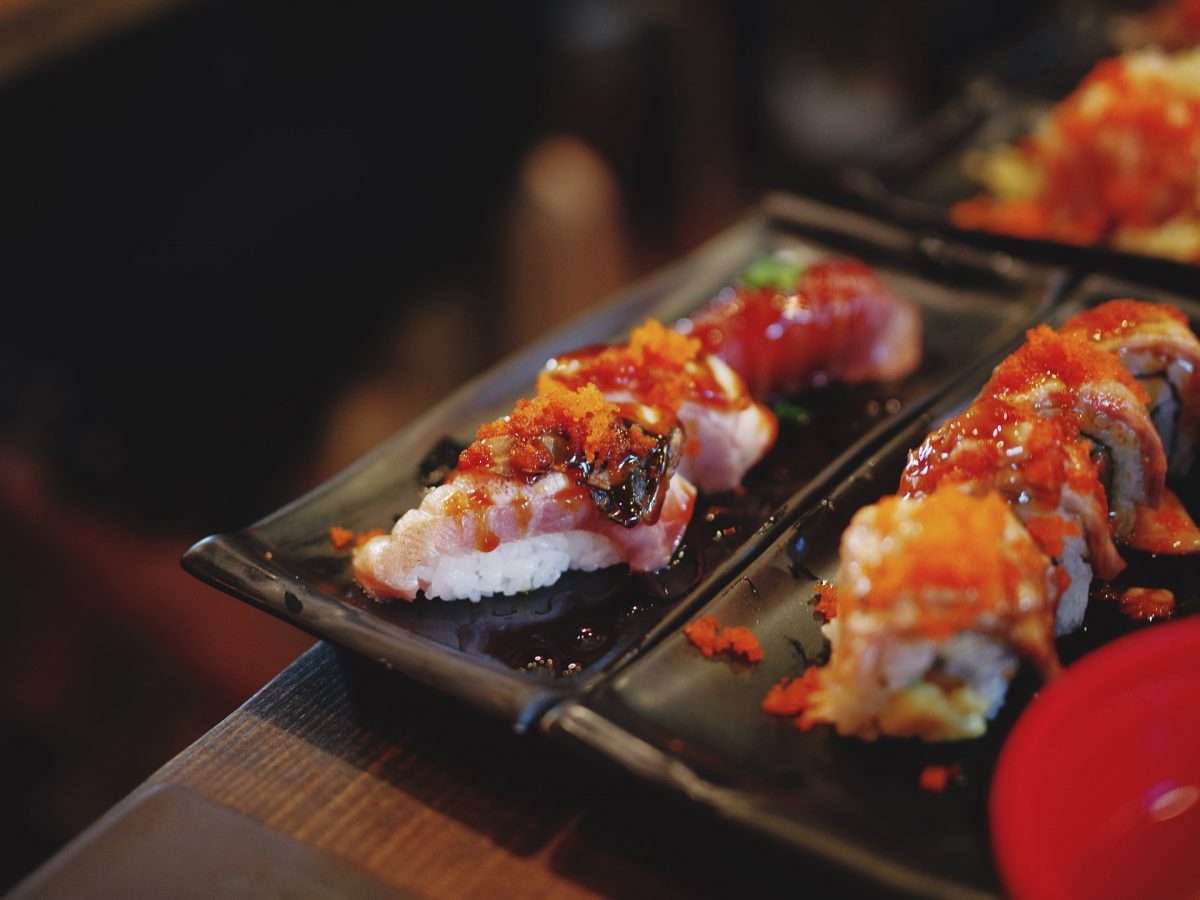
If you’re planning your next vacation to the very charming Japan, you’re definitely going to be indulging in some of the best sushi you will ever try.
It’s normal to feel a little intimidated when you’re in a foreign country and trying things for the first time. We find this especially so in Japan when you’re trying to figure out the numerous terms for eating sushi!
You might be comfortable ordering and eating sushi back home. However, eating sushi from its original source might trigger some nerves.
We’re here to help break down the essentials terms you might encounter. Additionally, we want to make sure you follow all the proper etiquette. After all, you don’t want to offend a Japanese chef.
Whet Your Appetite
As with any dining experience, you’re going to be looking for something to whet your appetite. While most sushi dishes are tapas-sized, you might still want something to start your meal with.
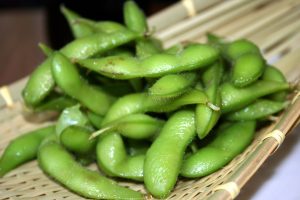
Photo from Wikimedia Commons
Opt for edamame, that is salted, boiled soybeans. These lightly salted beans make for the perfect opener to any traditional sushi meal.
Otherwise, you might want to try agedashi tofu, that is, deep-fried silken tofu. The outermost layer is slightly crunchy while the tofu within remains soft and light on your palate.
Roll The Right Way With Temaki & Maki
How do you know what’s what when it comes to ordering sushi. You say the wrong thing and suddenly you’re face to face with the diced, less than desirable parts of an octopus.
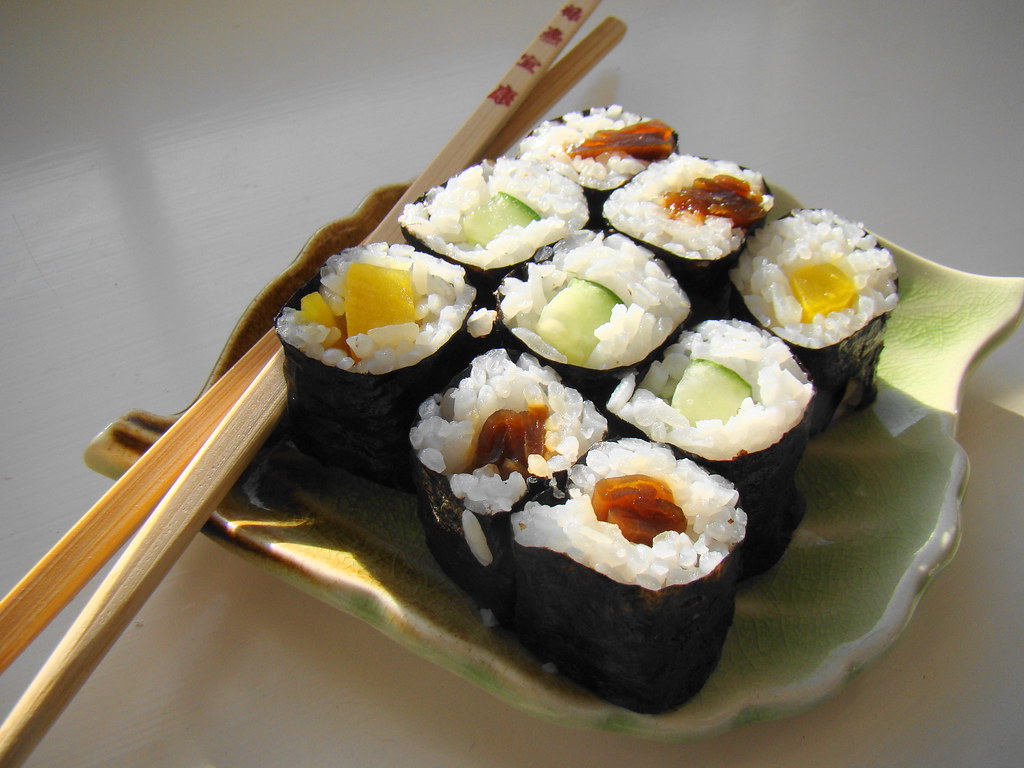
Photo from Vegan Feast Catering on Flickr
If you’re a beginner and a little less adventurous, avoid the likes of sashimi and nigiri. You might not want to dive into raw fish right away.
Instead, try asking for maki or temaki. Oftentimes, both maki and temaki comprise of cooked seafood, sushi rice, and vegetables in a nori wrap (seaweed wrap).
A safe choice for a newbie would be unagi (eel). You will often find that your unagi has been grilled with a sweet brown sauce. Unagi fillets are soft and tender and paired with the aforementioned sauce makes for a match made in sushi heaven.
Nigiri Or Gunkan If You Can’t Get Enough Of Those Carbs
Perhaps you’re ready to explore the world of sushi a little further than just safe and cooked. If that’s the case then ask for nigiri.
Nigiri typically looks like a piece of raw fish atop an oblong bit of rice. The options for your neta (topping) are practically endless.
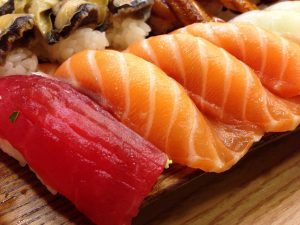
Photo from Pxhere
Our favourite would have to be maguro nigiri. Maguro is the term for tuna. While the cut of tuna might differ, maguro will essentially get you what you’re looking for.
A thick, fleshy piece of deep pink, almost red maguro resting pointedly on a bed of vinegar infused rice. That is the nigiri of our dreams.
Gunkan means boat. Notice that gunkan-style sushi come with the nori wrapped around what would be nigiri. This is a great option for those of you who love the taste of your nori wraps.
Sashimi For A Purer Experience
If you’re already sure that you like your fish fresh and raw skip the nigiri and ask the chef for sashimi. Sashimi is simply sliced raw fish. Similar to what you might find perched on rice as nigiri, you have a wide selection. You may already be familiar with salmon sashimi, however, we recommend you give Bluefin Tuna sashimi a try.
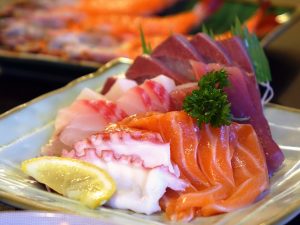
Photo from Pixabay
While many may opt for the fatty part of the tuna, we can’t get enough of the darker, leaner cuts. A simple way to tell how fatty your cut is is by the colour. The lighter the meat, the fattier it is.
We find that by enjoying sashimi, you don’t overload on rice the way you would with nigiri. However, the rice also provides a nice break from pure raw fish.
Omakase For If You Still Can’t Decide
Now that we’ve covered the most basic terms that you might find yourself faced with, you’re ready to start figuring out that menu.
Alternatively, if this task still seems too daunting fret not! Ask to go omakase. The word ‘omakase’ translates to mean entrusting yourself to the chef.

Photo by Lou Stejskal on Flickr
Avoid the stress and anxiety that comes with having to decipher a complex menu. Just let your chef know if you have any allergies or dietary restrictions. Now relax and let the master work his magic.
Chirashi Dons If You’ve Got A Big Appetite
‘Chirashi Don’ translates to mean scattered bowl. That is exactly what you might expect when you order one of these at a sushi joint in Japan.
Scattered chunks of sashimi and fish roe are the first things you will see. Dig in and you will be pleasantly surprised by a generous portion of sushi rice.
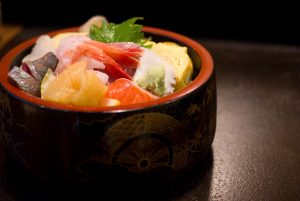
Photo by Cipher on Flickr
Chirashi dons are great for if you’re feeling famished and the two or three pieces of nigiri just aren’t cutting it. Alternatively, try ordering a bara-chirashi don if you prefer your seafood cooked to raw!
Proper Etiquette So You Don’t Embarrass Yourself
If you’re anything like us then you create a dubious mixture of wasabi and shoyu (soy sauce) whenever you hit a sushi joint. You might then proceed to dunk your entire nigiri into the concoction.

Photo from Pixabay
This might be all well and good back home but in Japan, this is a major faux pas. Aside from that, it is also a huge insult to the chef.
Traditionally, the chef takes the time to season the sushi rice. Additionally, a small amount of wasabi may be placed between the fish and the rice when served nigiri style.
Japanese chefs take a lot of pride in their craft. Throwing their precious sushi into a bath of shoyu and wasabi is one of the worst things you do. This bath of shoyu also softens your maki rolls and plump nigiri, often causing them to fall apart before they make it into your mouth.
Not Confident Using Chopsticks?
Fret not, nigiri, temaki, and maki may all be eaten your fingers. If you would like to add a touch of shoyu, dip your nigiri fish side first lightly into the sauce. However, make sure you try your sushi first since, as mentioned, the rice is usually seasoned beforehand.
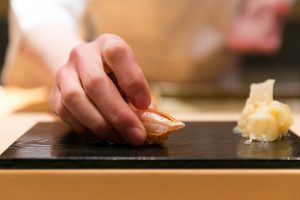
Photo from Wikimedia Commons
Do take note, while nigiri and maki rolls may be picked up with your fingers, sashimi may not. Ask for a fork if you’re not feeling too sure of your chopstick-yielding skills.
Cleanse Your Palate Between Dishes
You might have noticed a ramekin or side dish with thin, pale pink or off white slices of something. This is gari or sushi ginger! The Japanese use this to cleanse your palate in between courses.
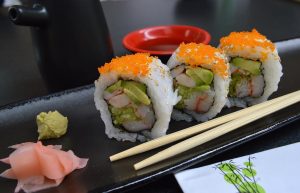
Photo from Pixabay
You wouldn’t want the strong flavours from your unagi to overwhelm the freshness of a nice slice of maguro sashimi.
End Your Feast With Miso
Now that you’ve reached the end of your meal, you’re probably feeling more than slightly full. You will find that the little pieces of nigiri, gunkan, and maki do add up.
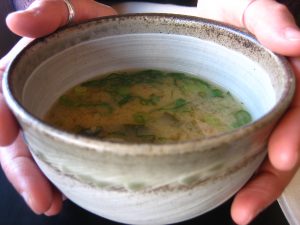
Photo by Jeremy Keith on Flickr
Order a bowl of miso soup to help aid digestion and rid yourself of that suffocating feeling of being too full. Miso is a paste made from fermented soybeans. Drink your miso straight from the bowl, you will often find that spoons are not given with your miso soup.
At The End Of The Day
You should enjoy your meal! Don’t let yourself feel too overwhelmed that you forget to appreciate the experience. Remember to order only sushi from your chef and everything else from your server.
Don’t forget to compliment your chef, even if you feel your Japanese is subpar. A genuine compliment will be appreciated by your chef and it will definitely surpass the language barrier.

